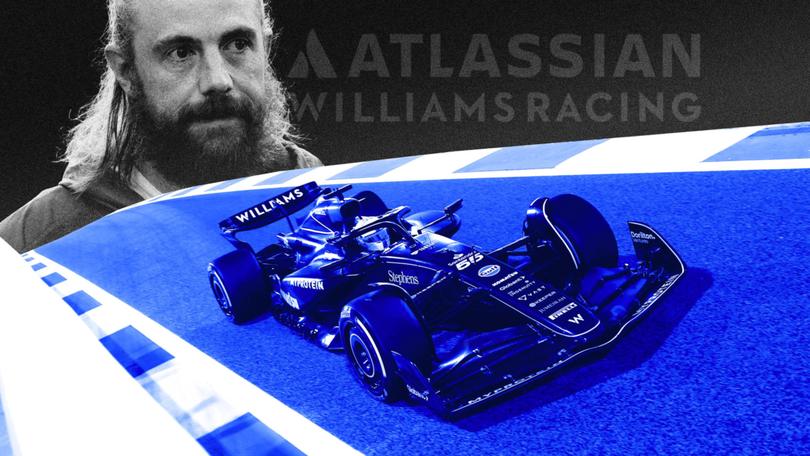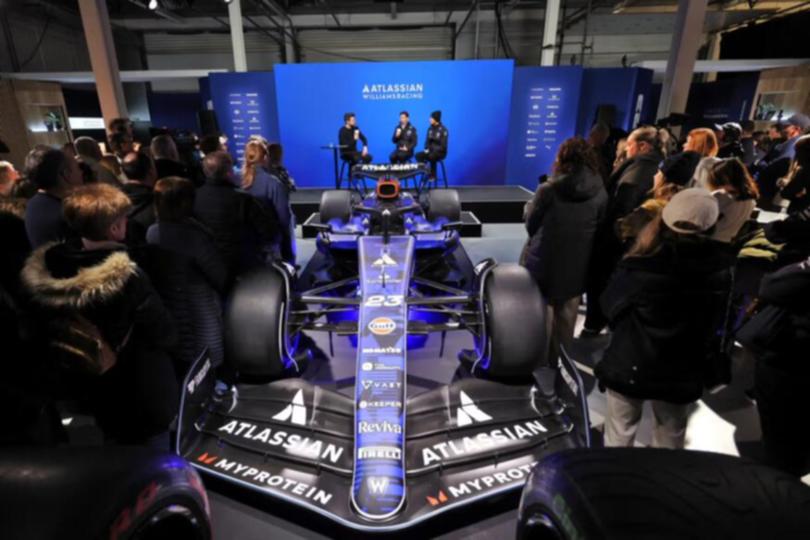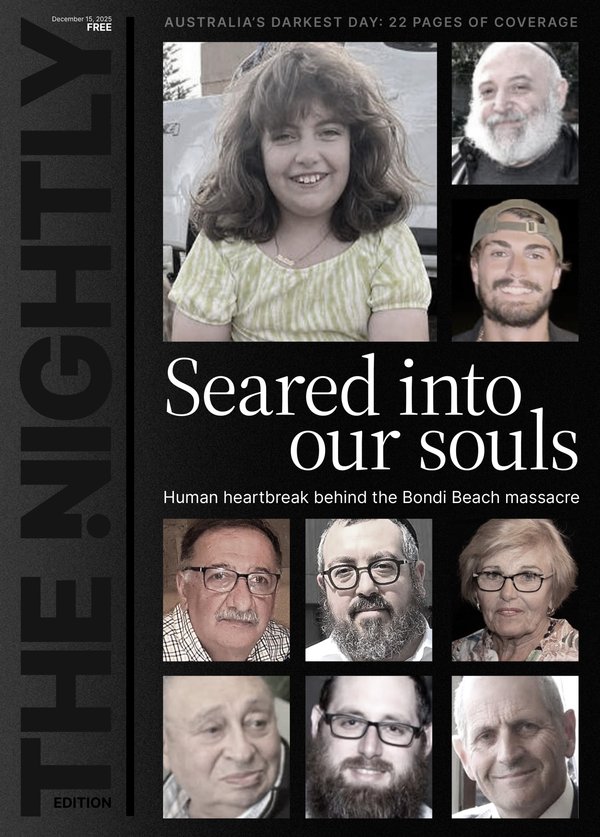Atlassian Williams Racing: Why is billionaire environmentalist Mike Cannon-Brookes risking his rep on F1?

Mike Cannon-Brookes, the co-founder and chief executive of Australia’s most-valuable technology company, Atlassian, is making a bet at odds with his long-haired, climate change-activist persona: a big sponsorship of Formula 1 motor racing.
The billionaire’s decision to invest in one of the sport’s weakest teams, now called Atlassian Williams Racing, could risk Cannon-Brookes’ reputation as a business leader who carefully oversees spending at the company, which he grew out of his Sydney home into a global business worth around $120 billion — about the same as the National Australia Bank.
The car’s colour scheme — with Atlassian emblazoned on the spoiler — will be presented in London on Tuesday, when the competition’s ten teams, including their principal drivers, appear at a two-hour publicity event broadcast over the internet. The first race is in Melbourne at the Australian Grand Prix, which starts on March 13.
Sign up to The Nightly's newsletters.
Get the first look at the digital newspaper, curated daily stories and breaking headlines delivered to your inbox.
By continuing you agree to our Terms and Privacy Policy.High cost
Few Australian brands have dared to lend their name to a team competing at the highest levels of global sport. Even Foster’s Lager, in its heyday as the nation’s greatest beer export, limited itself to a second-tier English soccer club, Norwich City.
The cost is significant. Atlassian has not disclosed how much it will pay the troubled team, which is owned by an American private equity firm, Dorilton Ventures. But marketing experts say Atlassian will have to pay tens of millions of dollars a year, although the tech company will have cut the price by giving the team Atlassian products, which are used by computer programmers to coordinate their work.
Even though Atlassian’s low-cost software lacks the glamour of the Formula 1 racing circuit, epitomised by its famous race in Monaco, marketers say the Australian tech outfit and Williams share characteristics: they both are trying to prove they can be the best in their field.
“You could call both of them challenger brands,” says Nick Verhelst, the senior partnerships lead for M&C Saatchi Sports and Entertainment Australia, an advertising and marketing agency.
Faded glory
Founded by late British racing car driver Frank Williams in 1977, the team dominated the sport in the 1980s and ‘90s, when it won nine constructors championships, the award for the most successful car owner.
After switching to BMW engines in 2000, Williams began a long period of decline. It hasn’t won a race in two decades, and has found it so hard to attract advertisers that no sponsor has agreed to share the team’s name since 2019, when it finished last.
The main sponsor that year, US phone company ROKiT, sued, alleging it was lied to about the team’s prospects. Williams “intentionally and fraudulently concealed the fact that Williams Engineering simply did not have enough money to develop the F1 car which would be subject to the sponsorship agreements to an industry-leading standard,” ROKiT’s lawsuit said.
The lawsuit was thrown out of a Florida court on technical grounds.
‘Zombie stock’
Atlassian has faced challenges too. Three-and-a-half years ago investors turned on the company, unhappy with its failure to turn a decade of speculator revenue growth into profits. One US tech analyst, David Trainer, called Atlassian a “zombie stock” and predicted it would go broke.
The shares fell 73 per cent. Then, last year, Atlassian surged as sales of its artificial intelligence programming tools took off and more large companies signed up.
Trading on the US Nasdaq stock market, Atlassian is near three-year highs, valuing the company around $120 billion. Cannon-Brookes’ stake is worth $30 billion, although the financial impact of the recent end of his marriage to Annie Cannon-Brookes is unclear.
The improved financial performance seems to have emboldened the businessman. Describing himself as a “passionate clean energy evangelist” who drives an electric car between his homes in Sydney and the NSW southern highlands, he has shown little interest in motor racing before.
But Formula 1’s position on the cutting edge of automotive engineering has long attracted to technology entrepreneurs. Amazon Web Services, a cloud-computing company with close links to Atlassian, has been a sponsor of the competition since 2018.
The 1 per cent

Atlassian has already sent a team to England to start working out how it can help, according to Atlassian executives.
By providing its technology to Williams, which has about 750 employees, Atlassian may be able to boost the team’s performance in a sport where even tiny improvements can have a big impact, according to Verhelst. “It’s the 1 per centers that really make that difference,” he says.
Formula 1 is enjoying a global surge. About 750 million people follow the sport, according to a research firm Nielsen, and the fastest-growing group of fans are women aged 16 to 24. Interest has been helped by a Netflix reality-TV series, Drive to Survive, and may be amplified by an Apple-produced movie starring Brad Pitt, F1, due for release in coming months.
Even if most of the computer programmers who use Atlassian software aren’t Formula 1 fans, the people who run their companies are likely to enjoy the glamour of mixing in the sport’s inner circle, says sports-marketing consultant Geoff Donohue, one of the few Australians to negotiate a Formula 1 sponsorship deal.
100-1 chance
As named sponsors, Atlassian executives will also have access to a compound or tent within a bigger area separated from the general public at every Grands Prix to entertain clients.
“The bit I wouldn’t understate is it’s very, very in demand as a social event,” Donohue says. “In the corporate areas there is always a lot people, like horse racing, who aren’t necessary avid fans of the sport but they love the social outing.”
On Friday at the Silverstone racing circuit in central England the team’s new car, which has been designated FW47, was shown to the public for the first time. It was driven by Spaniard Carlos Sainz, who won two races for Ferrari last year.
“We are very excited about the potential we see with the team,” Atlassian’s chief revenue officer, Brian Duffy, told The Nightly from the event. “We’re actually embedding a team now to help understand where the challenges are and how we can use our solutions to move up the rankings.”
A quick turnaround looks unlikely. After finishing ninth last year, even the most optimistic betting odds give Atlassian Williams Racing a 100-to-1 chance of winning this year.
If the team does not improve its performance, Atlassian might find the racing association damages, rather than burnishes its reputation.

